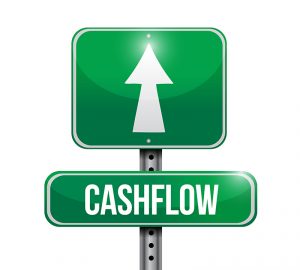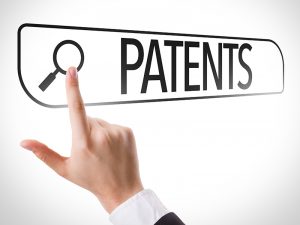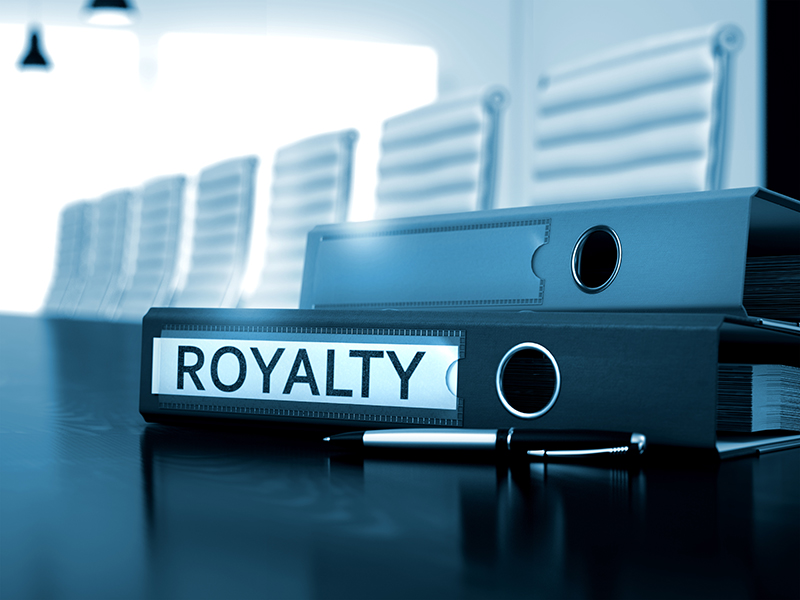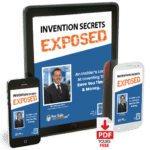How Licensing an Invention Works

A winning invention – a truly innovative creation that solves an important problem for people in need – is a major accomplishment. The time and energy that goes into a successful product are immense, especially when you’re focused on adding as much value as possible. But now what? Once you’ve designed, tested, tweaked, and a created a working prototype of your product, where do you go next?
The answer, of course, is a little complicated. A great invention isn’t a bullet train to riches; how you choose to proceed will have a large influence on your future earnings as an inventor.
Monetizing your invention can be accomplished in one of two ways: licensing it to a third party or manufacturing and selling it yourself. While each has its own pros and cons, licensing provides a convenient option for those who wish to prioritize the creative process over the nuts and bolts of running a business.
What Is Licensing?
Licensing is the process of signing over the rights to creation and use of an invention to a third party company in exchange for a lump sum or royalties. If, for example, you create a new and better mousetrap but would rather not build and sell it yourself, you may be able to license your invention to an existing player in the mousetrap space who is in a better position to make an impact in the market.
In this model, the company you sell the rights to will handle every step of the production and sales process, from manufacturing to distribution. In most cases, licenses are exclusive, meaning that only one company at a time may sell your product.
Licensing takes the burden of business decisions away from inventors, creating a pipeline to profit that does not include any of the risks of attempting to launch a new business. Rather than necessitating a sizable investment, licensing requires little action after an agreement is reached.
When to License
As with all choices in business, licensing comes with distinct pros and cons that should be carefully considered. For some products, licensing can offer a way to leverage an existing company’s business experience in a way that increases the odds of success. For others, a standalone brand may provide the most value to consumers. As an inventor, it’s important to consider how and when licensing is most appropriate before reaching out to others in your industry.
Money Pitfalls of Building a Business vs Licensing
One of the major deterrents to starting a business involves the massive upfront investment required to get your new endeavor up and running. Manufacturing and distribution can be extremely expensive to put it mildly. In addition to someone being incredibly innovative by introducing a blockbuster new product to the world, an inventor must also possess a massively strong business acumen. These two skill sets are not inherent naturally in most creative people. Launching an invention usually involves creating molds, making production runs, hiring sales, managing inventory, distribution, sourcing, marketing, budgeting, costing, etc., etc.
Building a business from a single product is more than just a daunting task for an inventor that already has the funds readily available. Inventors choosing to manufacture on their own can easily reach an investment of well over $100K before recouping a single penny with no guarantee of success.
Additionally, many inventors hold day jobs, making business ownership impractical for everyday people.
When Guaranteed Cashflow Is Important
 While business ownership is far more likely to generate large returns in the long run, the first few years of any new company can be quite rocky. On average, a startup will operate in the red for 1,000 days – approximately three years – before turning a profit, requiring a large time investment in which you are unlikely to see a substantial amount of cash in the bank. Licensing solves this problem, granting a financial benefit immediately rather than years down the road.
While business ownership is far more likely to generate large returns in the long run, the first few years of any new company can be quite rocky. On average, a startup will operate in the red for 1,000 days – approximately three years – before turning a profit, requiring a large time investment in which you are unlikely to see a substantial amount of cash in the bank. Licensing solves this problem, granting a financial benefit immediately rather than years down the road.
When You Want to Increase Your Odds of Success
There’s no denying the challenges that go into seeking a company to license your product. Jumping through the hoops to find a taker and structure a licensing agreement can be quite trying. However, the process of starting a new business is exceptionally difficult, especially for those new to ownership. With 20% of new businesses failing in the first year and over 50% failing by year four, the odds of success are stacked against you when you choose to launch your own company.
Patents and Licensing
Creating a great product is only the first step on the road to licensing. Until you’re able to file a patent, it is unlikely to land a licensing deal. Some inventors have claimed to have success in using Non-Disclosure Agreements to license their invention but I’ve never spoken or heard of an inventor that has done this successfully. So, there may be exceptions but in general, companies are only interested in licensing products where a patent application has been professionally filed or the patent has already been awarded to the inventor.
The process of obtaining a patent is costly, arduous and time consuming which speaks to their legitimacy. This is not something that can be overlooked or rushed because the patent dictates what you own and what you can ultimately license to a company. Companies that are looking to license your invention want exclusive rights and a way to remedy against any competitors that are trying to copycat the product. The patent acts as a negative right which means that the patent holder can exclude who can make and sell the product. Without a patent and without enforcing the patent rights, there’s nothing to stop anybody from trying to profit from the invention.
There are a few different kinds of patents offered by the U.S. Patent and Trademark Office but only two options are of any real relevance to inventors: design patents and utility patents. A utility patent covers the conception of a new and valuable process, machine, or manufacturing tool and offers protection for up to 20 years. A design patent protects the ornamental design of a functional item for 15 years. In some cases, only one patent will apply, while other inventions are best suited to multiple patents meaning that you can file for both a utility AND a design patent on the same invention.
Applying for a Patent
The patent process can be long, costly, and convoluted, but inventors with a sound understanding of patents, concrete notes, and an ability to follow rules to the letter will have fewer issues. Patent applications can be filed independently or with the assistance of an attorney or agent licensed by the United States Patent and Trademark Office (USPTO).
Prior to getting the ball rolling, inventors must verify two extremely important requirements:
- The invention in question qualifies for a patent
- All aspects of the invention can be clearly described
If you are reasonably sure your invention qualifies and that you have the necessary language skills to document your invention fully, you can proceed with the application process. Patent applications can be filed online with the USTPO but must be complete at the time of processing. Failing to include every requested detail can result in a rejection that will require starting the process over again. While the USTPO makes every effort to respond to applications within 12 months, the process of securing a patent will likely take longer than a year.
Filing a successful patent application often hinges on both the invention process as well as the quality of the information provided, so be sure to adhere carefully to all given instructions. In the case of nearly all novice inventors, it is wise to seek professional assistance from a licensed patent practitioner with the USPTO. Making a mistake in the patent process could cost you all the rights to your invention. As Thomas Jefferson famously said, “ignorance of the law is no excuse.”
First Inventor to File Country
With the America Invents Act signed on September 16, 201, the United States switched from a “first-to-invent” country to a “first-to-file” country for applications filed on or after March 16, 2013. Prior to this date, it was essential for inventors to keep careful records of their invention every step of the way, from brainstorming through prototype development. Inventors were instructed to organize notes in a notebook, complete with full written descriptions and images with signatures and dates. While this is still good advice, it won’t have any bearing with the USPTO.
The rights of the invention, as of March 16, 2013, go to the inventor that filed for the patent first. This is regardless of who actually invented the product first and regardless if there is proof of this with an inventor’s notebook. A good rule of thumb is to file often and file early if you feel that you have an invention that is worth protecting.
Research the Market
Just because you see the value in your invention doesn’t mean the world will agree with you. Before investing in the patent application process – with fees ranging from as low as $1000 to $15,000 or more depending on the product, patent type filed and attorney fees – be sure to perform careful research to ensure there’s a market for your product. The potential for commercial success is especially important to any companies who may consider licensing your invention.
Perform a Patent Search
With thousands of patents at play in the marketplace, it’s important to be sure a patent doesn’t already exist for a similar product. While the USTPO will provide this information upon reviewing your application, it’s best to verify independently that you’re not attempting to patent a device or process that already exists before sinking money into the application process. The USTPO offers numerous patent search resources and tutorials to assist inventors in reviewing available records. At For Sale By Inventor™, we’ve created our own free patent search tool inventors can use to search to see if their invention has already received a patent.
Consider Legal Representation
For those new to the world of patents, working with a lawyer has significant advantages. Instead of muddling through the process on your own for the first time, an attorney can ensure applications are prepared to the highest standards, helping applicants to properly navigate the challenging legal landscape.
Fill Out an Application
After taking the time to verify eligibility, document the invention process, research the market, search for similar patents, and obtain a lawyer, you are ready to move forward with your application. Do not rush this process; one mistake is all it takes to have your request denied. Some patent examiners may be willing to work with you to explain errors and allow opportunities for corrections, but many will not. In order to expedite your application, do your best to get every detail right the first time.
Seeking Licensing
In the wide world of licensing, it’s nearly impossible for a company to approach an inventor out of the blue just because they found your patent in the USPTO database. Instead, it’s up to the inventor to actively reach out to companies in search of licensing opportunities.
This process by itself can be arduous, requiring a fair bit of skill and experience in marketing and sales. Simply sending a letter likely won’t yield positive results, so take time while your patent application is pending to research and approach companies that you feel are a good fit for your invention. There’s no one right answer, so diligence and persistent follow-up is key to establishing connections and closing deals.
While the process of seeking out companies will vary greatly from one industry or product to another, there are some steps you can take to increase your chances.
Locate Appropriate Companies
While the big players in your industry are likely well known, there are hundreds of other brands that may be a good fit for you. In order to maximize your options, you can utilize The Thomas Register of American Manufacturers. This is available at your local library or online at ThomasNet. This database organizes suppliers and manufacturers to help you locate appropriate companies. Inventors can also use the North American Industry Classification System (NAICS) to research companies by their NAICS code to identify the major players in their industry.
Consider an Agent
Like in book publishing, real estate, and entertainment, an agent can be an excellent way to build industry connections and get your name out there. Marketing agents exist to connect products with companies, increasing your odds of the right brand seeing your invention. Many agents operate on the down low to avoid a barrage of requests from inventors with lackluster products, but you may find some that advertise online. Others only accept referrals from existing clients, so networking with area inventors can increase your odds of finding a reputable agent.
Contact as Many Companies as Possible
When contacting companies, the logic for job searching applies: reach out to as many companies as possible with a strong, valuable presentation. How you choose to make contact is ultimately up to you, but you should consider as many avenues as possible including email, online submissions, social media, trade show introductions, in-person meetings, and phone calls. Not all companies will respond to you, but the more names you try, the more likely you are to get a hit.
Follow All Guidelines
In response to queries, many companies will provide information on their process. If you receive submission guidelines, follow them as closely as possible. Companies create rules regarding product submissions for a reason so defying their instructions will not impress anyone. For companies that do not have a process, request a face to face meeting. While phone or email works in a pinch, an in-person sit down can be a good way to leave a lasting impression.
Licensing your product will not happen overnight, so be prepared for a healthy dose of rejection as you reach out to brands in your industry. It’s not personal; companies have many reasons for turning down a product offer. Instead of letting a “no” sink your spirits, continue pressing forward with other businesses in the market.
What Companies Look for in Licensing
While no two companies are exactly alike, most do use a similar set of criteria when evaluating products from a licensing perspective. Many companies seek benefits like:
- A good idea that demonstrates creativity and ingenuity. Anyone can invent a product, but a truly innovative creation will attract immediate attention.
- A competitive product with few, if any, rivals in the marketplace. Your product should be an improvement over what already exists, not a slightly different imitation.
- Growth potential. Scaling is very important in sales and in business. A product with a very small or limited niche may not have room to grow which will cut down significantly on potential profits.
- Patent protection. Virtually no companies are willing to take on products with no patent protection, so ensure yours is protected with an appropriate and sound patent application filing.
- A professional presentation. When offering details about your product to investors, prepare exactly what you will say and how you will say it.
 Royalty and Payment Structures
Royalty and Payment Structures
When you successfully create a connection with a company, negotiating the terms of your agreement is the next step. As a new inventor, it’s tempting to take the first offer you hear, but this can be a mistake. As with job offers, many companies attempt to lowball inventors at first but will be willing to negotiate.
In general, payments for an invention are structured in three different ways, and can occur in any combination of the following:
- An upfront licensing fee
- Ongoing license fee payments
- Royalty payments, or a percentage of revenue based on units sold, often between 2% and 10%
Negotiating Royalties
Many businesses will offer an upfront fee in addition to a royalty agreement, but determining a fair value can be a challenge for inventors. In regards to royalties, a few options can be used to argue better rates.
The Cost Approach
This method is designed to recoup the costs that went into the R&D process over the course of the life of the license. While straightforward, this approach does not factor in the actual market value of a product.
The Comparable Market Approach
This methodology utilizes a comparison to other like products to determine an industry norm. If, for example, most other products and agreements in your market have average royalty terms of 4% to 7%, asking for 5% is appropriate within.
The Income Approach
The income approach is based on the amount of income that should be generated by selling a licensed product. The most common application of this concept is the 25% rule.
Used frequently in royalty negotiations, the 25% rule assumes that the product’s inventor should receive an amount equal to 25% of the pre-tax operating profit over the course of the license. This amount is based on the total cost of a product minus any associated sales expenses. For example, if a company sells a product for $100 and estimates a cost of $50 per unit, the benefit to the inventor should be $12.50, or 25% of the $50 operating profit. This kind of royalty arrangement can be paid out as a percentage of net sales or as a price per unit sold.
To ensure companies are being truthful about expected costs, inventors should request to see a business plan. If a company cannot provide one, they likely have not completed accurate calculations or may be trying to hide true operating profit expectations.
Other Royalty Considerations
As with all things in business, royalties are rarely black and white. Other factors can influence royalty amounts, including:
- The type of intellectual property being licensed
- Position in the product lifecycle
- The current value in the market
- Trends in the industry
- The scope of rights granted
- The strength of intellectual property protection
- The size of the market
The Risks in Licensing
Despite its ease and convenience, licensing isn’t a fail-proof plan. There are some downsides to licensing over manufacturing that you should objectively evaluate before moving forward with a licensing deal.
Reduced Overall Income
In comparison to entrepreneurship, licensing is almost always less financially beneficial. While cash flow is higher in a licensing deal in the first few years, it’s unlikely to grow at the same speed a scaling business will. This results in steady but limited income streams.
What’s In It For Me – WII-FM
WII-FM: This is everybody’s favorite radio station. I’m sure you’re wondering what the chances of success are for following a licensing strategy. There are differences with every inventor, their expectations, the industry which all impact the potential success rate for licensing.
A finished product and an established patent don’t guarantee success in the marketplace. In fact, only 13% of inventors who seek a licensing deal will be successful. On the other side, there is 0% chance if you do nothing at all with your invention. It is important educate yourself on this process so you can show how your invention will benefit the potential licensee with recurring revenue. Demonstrating how your invention can help a company make more money will always increase your chances for success in licensing. Just like you, companies are only interested in what’s in it for them… which we all know is more profit!
Control Issues and Risk of Going Out of Business
As a participant in a licensing agreement, you will have very little say over how your product is marketed or sold. These kinds of details can have a lasting impact on the amount of revenue your product generates. If, for example, a company doesn’t invest any money into marketing your product or only provides limited shelf space, sales will likely fall short of your projections. You could put restrictions and clauses in your licensing agreement for failure to meet sales benchmarks but that will just bring you back to the starting point again.
While most business decisions are made assuming a company will continue to operate, this isn’t always the case. As the market continues to shift and change, many once-profitable companies are now shutting their doors. There’s no guarantee that the company you ultimately license your product to will continue to operate in perpetuity, or even until the end of the licensing period.
So, is licensing your invention the right choice for you?
The easy answer is maybe – but then again – maybe not. Licensing versus manufacturing is a deeply personal question that the inventor must choose given their background, budget, product, industry and everything else we’ve detailed through this article. I will say for the vast majority of inventors that I’ve encountered over the years, most choose the licensing path, at least to start, due to the substantial requirements of time and money necessary to start a business from a single product.
Hopefully this article has helped to shed light on what approach, licensing or starting a brand new business, makes the most sense for you and your invention.








